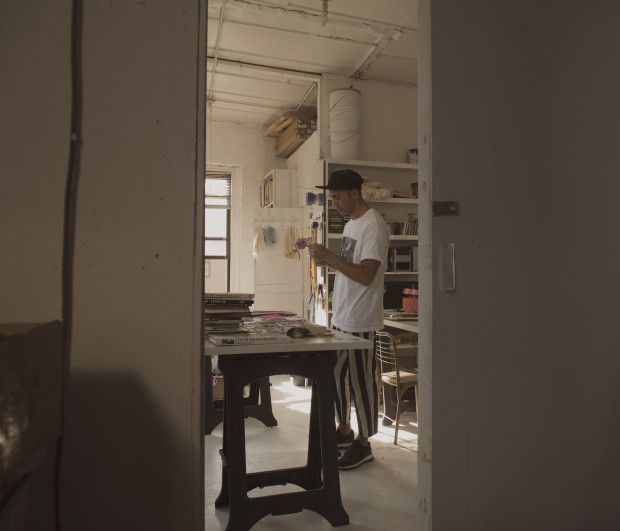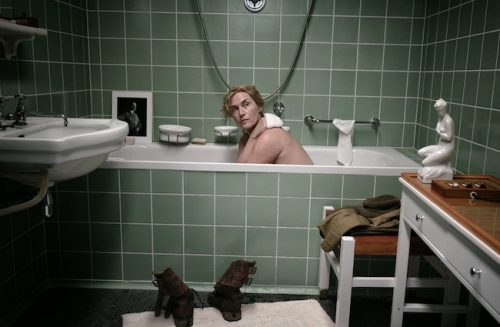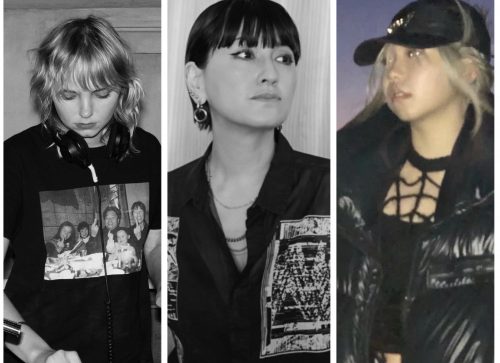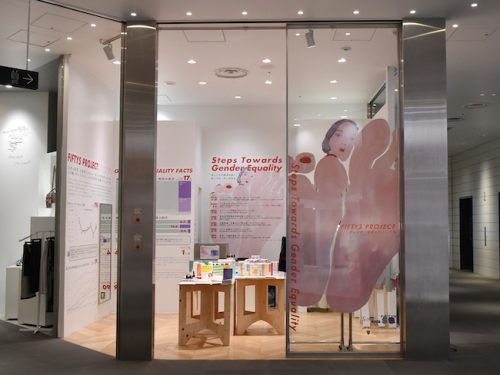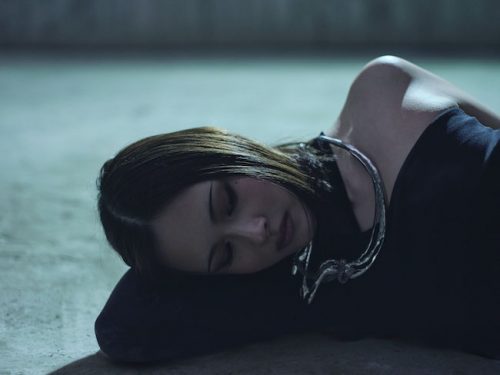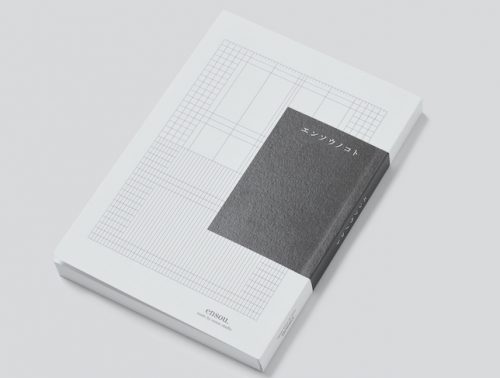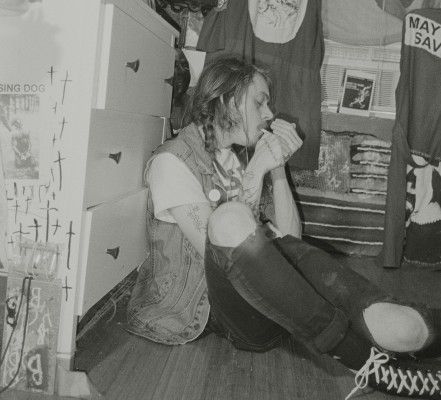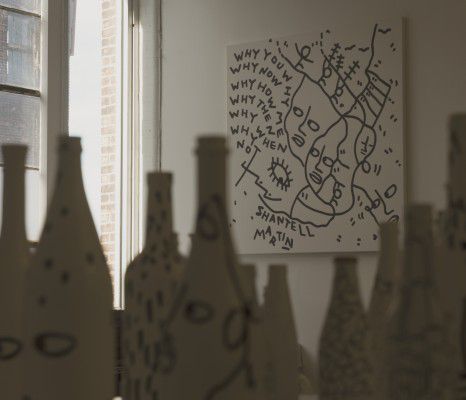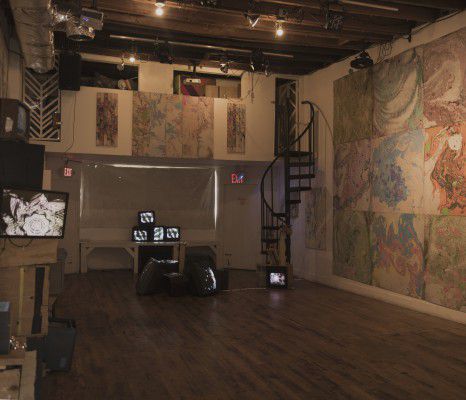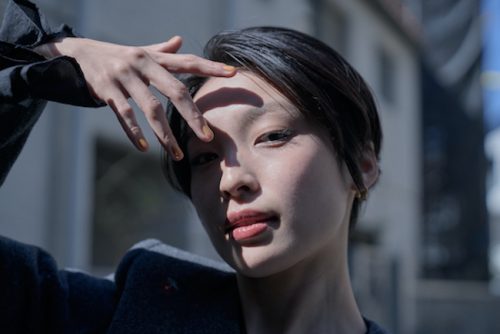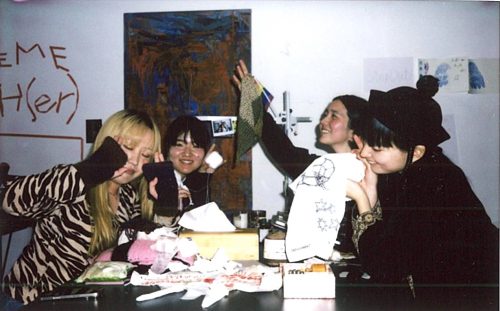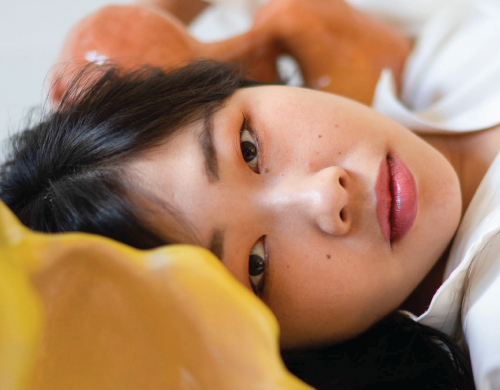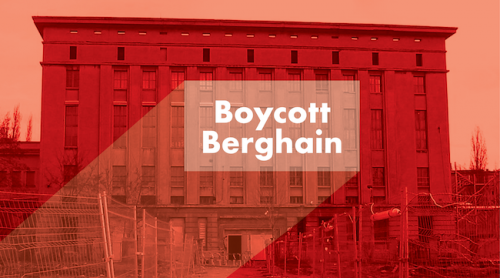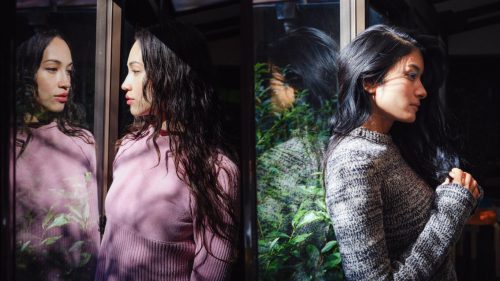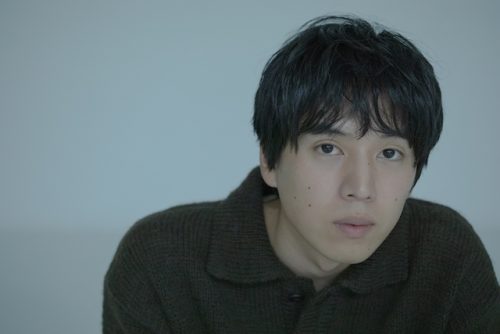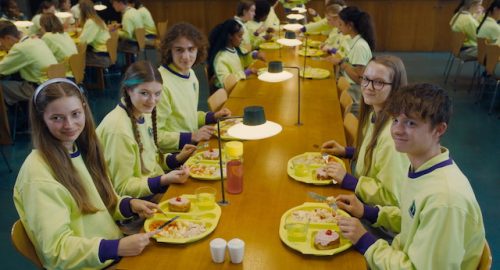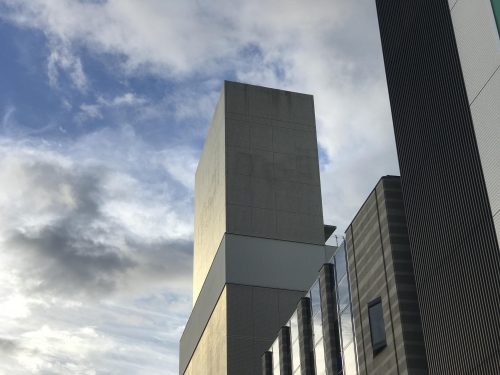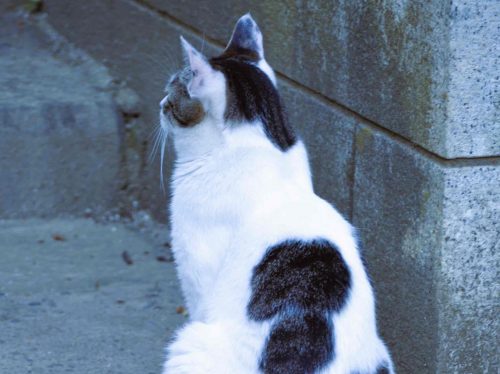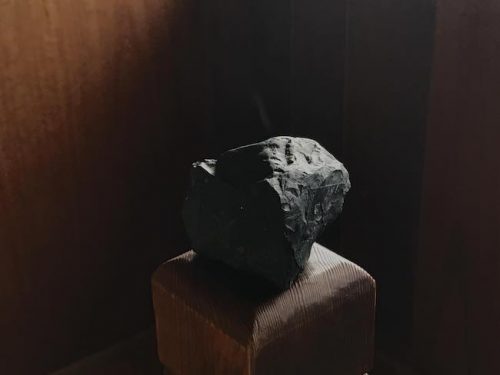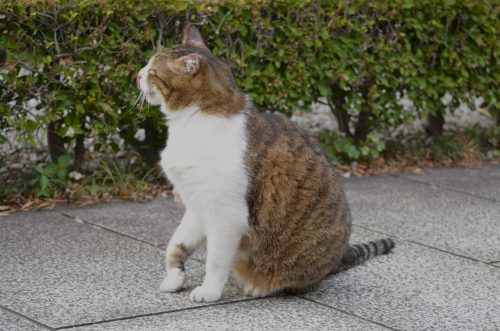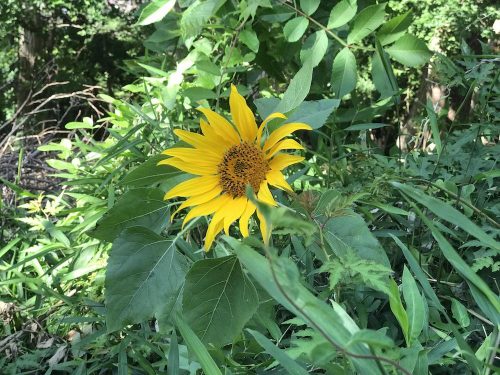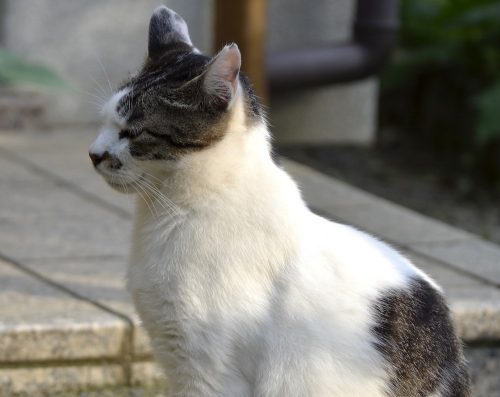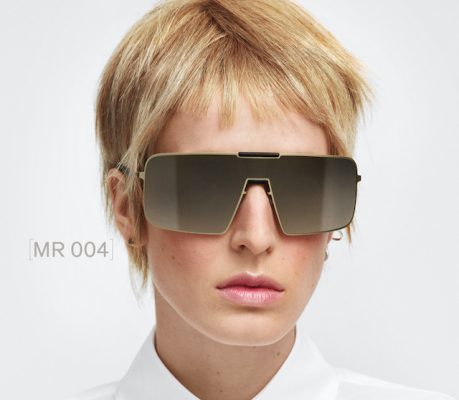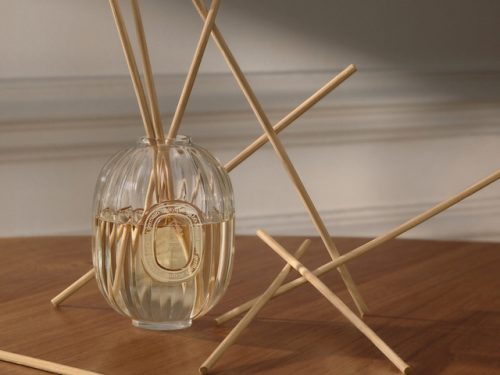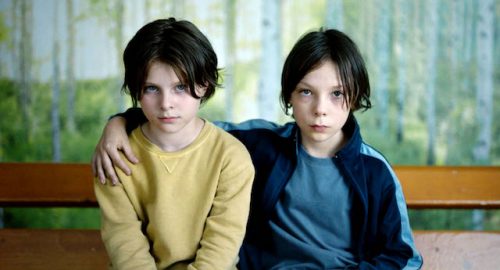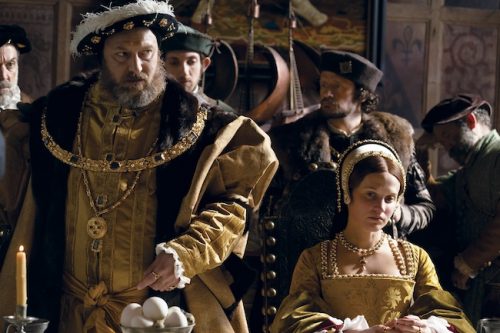グラフィック、ペイント、コラージュ、音楽、ビデオ、文章に至るまで、あらゆるアウトプットでもって表現を続けているHisham Akira Bharoocha。自身は変わらぬチャレンジングな創作姿勢でありながら、移り変わるNYの町並みを見続けたアーティストの声とは。
ーー——Kill Altersのライヴを観て、相変わらずとても奇天烈でサイケデリックで、音は違うけど変わらない攻めの姿勢がとてもいいなと思いました。創作の姿勢はBlack Diceの時から何も変わってない印象です。
Hisham「Black Dice については10年以上前に僕はもう完全に辞めているけど、まだ全然友達で、彼は続けてやっていますね。そして自分もずっと作り続けていて、おっしゃるように良い意味で、アイデアは結構変わっていないなと思います」
——Kill Altersバンドはいつから始めたんですか。
Hisham「2年くらい前かな。最近Hausu Mountainというレーベルから”No Self Helps”というEPをリリースし、今は次のレコードの作成中です。その他にも大阪出身のBonanzasのヴォーカル・吉田ヤスシさんとのコラボレコードを作りました。『Pelvic Floor Limited』というアルバムタイトルで、それはDeathbomb Arcというレーベルから出ています」
——多才で色んなことをやられているけど、今は壁画のペイントのプロジェクトがあるそうですね。ペイントのためのインクで描いているんですか?それとも立体感を出すために彫ったりもするんでしょうか。
Hisham「壁画はもちろん描いていて、立体を出すときもあるんですけれど、今回はウインドウトリートメントをして、窓に透明な色をつけようと思っています。スカルプチャーは時間があればという感じですね」
——そういう場合、実際の場所と自分の中の頭の中のイメージとをどういう風に合わせていくのでしょう。
Hisham「場所に合わせていますね。特に今手がけているのは、ガン治療のための場所なんです。僕も子どもの時に父をガンで亡くしているので、その大変さや治療している人の考えることが多少なりとも理解できます。人生のことを考えながら来ている場所なので、自分が落ち着くことができたり、自然の中で綺麗だと思ったものを頭のなかでレファレンスしてヴィジュアルを作りました。例えば天気雨や、日の出なのか夕焼けなのかどちらかわからないものなど、かなりアブストラクションしているけれども、そういったものをイメージしています(*1)。ウィンドウトリートメントも、日によって光が変わって出るからやりたくて。音も、自然の音を使ってDJリミックスを作っています」
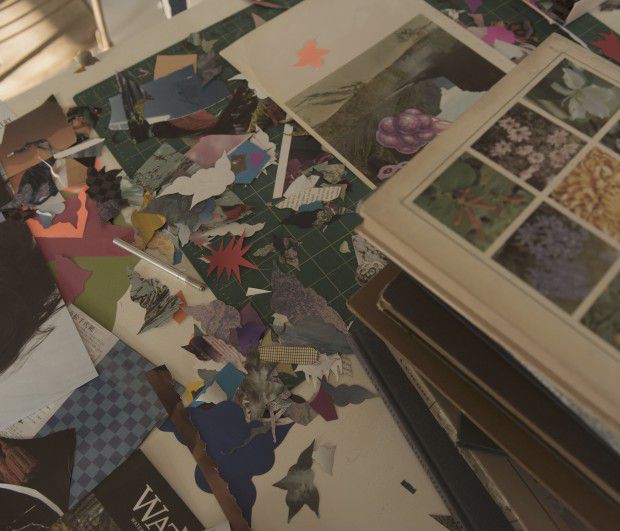
——美しい瞬間のイメージは様々なところから得ているとは思うのですが、形作る過程としてはまずは一旦グラフィックで見せるんでしょうか。
Hisham「そうですね。仕事にもよりますが、展覧会でもこういうものを描くつもりですと見せます。この場所を使ってこう描こうということをイメージすると、自分でもイメージが湧きますからね。クライアントがある仕事でも同じです。広告系のイラストレーション的な作品でももちろんそう」
ーー頭の中でイメージしたものと手を動かす作業とをどうやってリンクさせているのでしょう。
Hisham「動きながら考えていますね。気になった写真などを見つけてそこから始めることが多いです。見つけたも面白いもので、これとこれを合わせたらどうなるだろうという作業をしたり、でもコンセプトから入っているときもあるし、作品によって違いますね。作っていくうちにストーリー性があるものも出来上がったり」
——それは音楽のときも同じですか? コンセプトから入るときもあれば手を動かしている時に見つかるときもあるという。
Hisham「そうですね。例えば音楽だと、自分はドラマーだからリズムから入ることが多いかもしれないけれどメロディーからというときもありますし。本当に作っている時によりますね」
——全ての創作活動が自分の中でイコールだとしたら、アウトプットの先というのはどこでどう決まるんですか?
Hisham「本当に人生の流れの中でやってるなあという感じです(笑)。例えば秋にブルックリンミュージアムでやるパフォーマンスは、もっと大きい作品をやろうとしていたのがバジェットがなかったので小さくてもっと分かりやすいものになりました。予算の関係で、この人数で音楽だけでやりますということもあります。仕事の場合は、そういう流れにあったやり方で決まっていきますね」
——ちょっと話が遡りますが、あなたの好きなものの原点には日本のマンガがあると聞いたのですが、それがクリエイションにどのように反映されていると思いますか。
Hisham「僕の作品を見るとマンガとかスケートボードグラフィックの影響が構成、構図や僕の白黒の絵に見えると思います。全体的に壁画、コラージュにも見えると思いますが。目に引っ掛かるグラフィックなもの、つまりはっきりとした影と光、白黒でパキっとした絵が子供の時から好きでいまだにその影響を感じています。子供の時の体験、印象はいつまでも頭に残りますよね、どのような人でも」
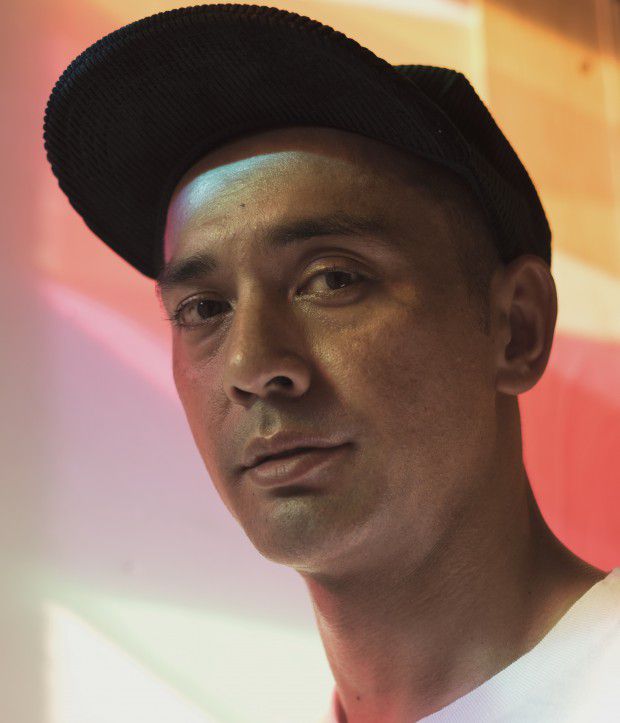
——あなたの印象は変わらないけど、NYの状況はどうですか?
Hisham「かなり変わりましたね。物価も家賃も高くなって、そういうことを心配しているとクリエイティビティも影響されます。なんでもビジネスだなあと、変に現実的に考えてしまう時もあるから、本当に何が作りたいか、何を自分のために作っているのかを自分で何回も確かめることが多いです。でも自分のスタイルでコマーシャルの仕事をやれたり、みんながそういうことを出来るわけではないのでラッキーだとは思ってます。周りではお金の事情からLAに引っ越す人も多位けれど、あまりに大勢が移っているからどんどんまた高くなってーーその繰り返し。キャピタリストの国に住んでいるから仕方ないけれど、もうちょっとアーティストが住みやすい環境にしてほしいなとも思いますね」
——SNSがアートに与える影響についてどう思います?
Hisham「ソーシャルネットワークの影響という質問であれば、そうですね、コンピューターの前に座ってみるインターネットと違い、携帯で簡単に見ることができる自分がフォローしてる人たちが体験するもの、見てるアートやパフォーマンス、聴いている音楽、それに興味を持つことがだいぶ多くなるような気がします。頭の中の情報が多くなり、新しいアイデアにつながる時もあれば、何が作りたいのか解らなくなることもあると思います。ほとんどは良い影響だと思いますが、世の中にもう存在する作品をたくさん見すぎると自分は次に何を作ればいいのか考えすぎることになる確率も多くなりますよね」
——アートと社会とのコミットの仕方は変化を迎えていると思いますか。また、それはどのような変化なのでしょうか。
Hisham「そうですね。前よりアートが使い捨てになってるような気がします。例えば僕の仕事でアートを企業の仕事で使われるときには一番ハイパーカラフル、エキストリーム、最新のグラフィックスタイルでないと仕事にならないこともありますし、若い子で自分よりギャラが少なくても仕事をしてしまう人がいればその人たちが選ばれることもあれば、自分より流行っているモダンなスタイルの作品を作っている人たちに仕事を取られることもあります。ファインアート・ギャラリーの世界でもこのようなことが見られます。今流行っている作品のスタイルでないと売れないとかギャラリーが興味を持ってくれないとかいろんな状況がありますね。ソーシャルメディアで目立っていて作品がそんなに良くなくてもギャラリーが興味を持ってくれたり。なので長い間自分独自なスタイルを作り上げたアーティスト、その人たちで今流行りそうなスタイルでないと生活に困る人はたくさんいると思います。ファインアート・ギャラリーの世界は、企業がアーティストの作品を使うのと同じで結局は何が売れるかという勝負なのでアートの世界の流行り廃りははやくなったような気がします」
——なるほど。最後に、何か新しいニュースがあれば教えてください。
Hisham「Kill Altersは新しいレコードを作っているので春には出来上がると思います。自分は息子が生まれて間もないので、彼の育ちを楽しみながら自分の作品作りに励み、次の段階に達する音の作品はビジュアルの作品を作るつもりです」
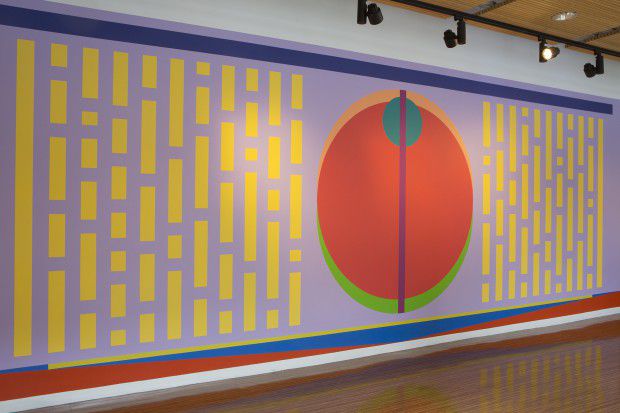
Cancer Treatment Cente(*1)
Hisham Akira Bharoocha
http://www.hishamakirabharoocha.com
photography Diego Garcia
interview Ryoko Kuwahara
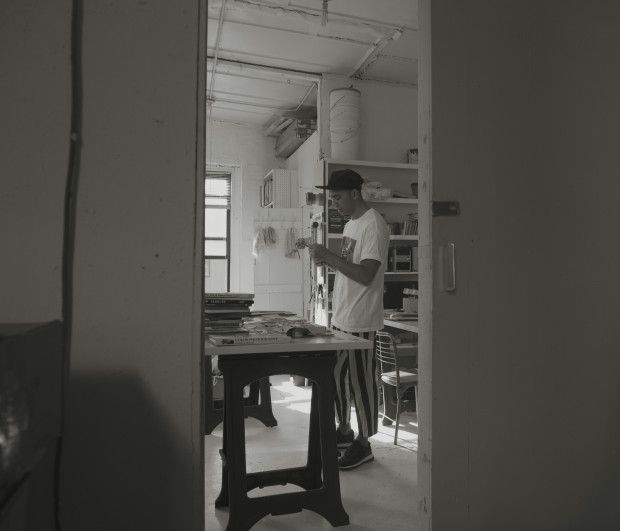
With various output styles such as graphics, painting, collage, photography, sculpture, music and video, Hisham Akira Bharoocha continues to challenge his creativity to the next level. Listen to his voice straight from the rapidly changing times in New York City.
―After watching the Kill Alters gig, I thought it was very psychedelic and strange in a positive way with the attitude I heard in the music as well as the performance. I then thought that not much has changed from your BLACK DICE years…
Hisham: I left BLACK DICE over 10 years ago now, but I’m still good friends with them and they are still doing their own thing. I love there music and I think they were one of the best experimental groups from New York in the early 2000s. As you mentioned, I’ve been continuously creating and the base of my ideas has not changed much, I guess. I like outsider music and art, and will probably always be riding the line of digestible and not digestible styles of art work or music.
―When did you start Kill Alters?
Hisham: Maybe 2 years ago. Bonnie and Nicos from the band had been working on this group for a couple years before I joined, but it definitely became a new thing when I joined. We released an EP called “No Self Helps” from the label Hausu Mountain in 2017 and we are now working on a new release which will either be an album or an EP. Another record we released this year was a collaboration with Yasushi Yoshida from a band called Bonanzas who are based in Osaka. That record was titled “Pelvic Floor Limited” by Yasushi. That record was released from a label called Deathbomb Arc.
―You seem to be talented in various fields, learned that you are also working on a wall-art paint project for Memorial Sloan Kettering Cancer Treatment Center right now. Are you using ink for this project or are you also sculpting?
Hisham: I do make sculptures once in a while but for this project in particular it’s going to be more like a window treatment plus mural painting, adding transparent colors onto windows. I would love to add sculptures to the installation if I have time ( in the end Hisham’s installation at the cancer treatment center consisted of a mural painting and a 10 hour sound mix).
―How do you built images, in your mind or at the actual workplace?
Hisham: It depends on the pieces I am working on at that moment. Sometimes I am composing based on what I see visually happening in my studio, but sometimes I come at my work with a concept in mind, then putting my hand into the work. Right now I am working on that mural installation for the cancer treatment center(*1). I lost my dad to cancer when I was 10 years old so I know how difficult it is to face that disease, for the patient and their family. I wanted to create a space that patients and employees who work in the space can feel contemplative and peaceful, to be able to visualize the beauty of life, reflect on the work I have created and maybe how it relates to their life experiences. My idea is to keep the visual elements rather abstract so the viewer is forced to imagine what I am referencing. These visual elements are based on experiences I often reference when I think of the most beautiful moments I’ve experienced in nature. Simple things such as a sunrise, sunsets and sun showers. The window treatment would be fun because the light changes throughout the day so I can image how that will change the space as the day goes on, what the weather is like outside. A sound mix will also be created using nature sounds, environmental sounds, folk music from around the world, and ambient records I feel will fill the space in a positive way.
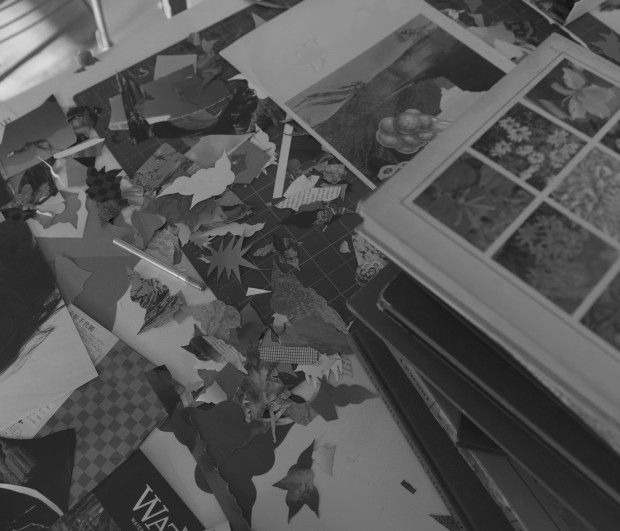
―I see you have a lot of sources for your beautiful designs, but when you actually form shapes, do you use graphics as a starter?
Hisham: I would say graphic elements, meaning bold shapes or sharp lines, defined collage imagery with a hard edge. it varies depending on projects but when I do drawings, I definitely use graphic lines as a starter. Using my imagination I draw things I have impressions of from my daily experiences, imagining places I’ve been or things I’ve seen in nature or in the streets, on trips abroad, those impressions I carry with me in my mind. Life itself bring me all of my inspiration. When I work with clients I have a similar approach but I keep in mind what the client likes about my work, what the assignment is. Illustrations for advertisements, editorial work, mural work often start with the graphics language I have created over the years in which I have been drawing, painting, making collages, and making music.
ーHow do you link your imagination and your painting process?
Hisham: I think as I work. As I move. Sometimes my hand moves first, sometimes my mind makes my hand do something it isn’t so used to doing. I get a lot of inspiration from photography, which is one of my preferred mediums to work in. I like making relationships between images, which you can see in my collage work, but with photographs you can place two photographs next to each other to create a unique perspective, by creating a relationship between images. Sometimes I work from a concept, sometimes it’s a more formal experience of me starting with marks, colors, objects. Again it varies depending on the project. There are times where I’m working from scratch and a story evolves from the work, and the work directs me to how it must become a finished piece.
―Is this the same process when you create music? Working from a concept and story, then melody evolves from there?
Hisham: Yes indeed. For instance, music-wise, I’m a drummer so most of the time I start from a rhythm. But there are times were a melody comes to me first so it really depends on my mood and the project I’m working on at the moment.
―If your creativity is all equal, how do you select your output channels?―
Hisham: I kind of leave it to the flow of what work is coming out of me at that time or what is requested of me by the outside world. I ride that wave. For instance, there was a performance I was suppose to do this fall at the Brooklyn Museum. It was originally a very big project with a larger budget, many elements of technology meets art, many musical performers from the area surrounding the museum from many different cultures, computer instruments as well as traditional instruments, singers, physical movement throughout the museum etc. In the end the budget was cut drastically so it became a much smaller, more simple performance with a basic, easily understood concept. Budget controls most of the size of my projects so in most cases I create a proposal based on the size of the budget. Sometimes I’m busy with commissioned visual work, sometimes I get asked to organize an all encompassing performative experience, sometimes I get asked to organize a large scale music performance. I just do what I have to do in the moment and try to push myself in the studio as much as I can when I have down time.
―I’ve heard you do like Japanese Manga a lot. That is one of your starting points. Does it reflect your creativity?
Hisham: I don’t often read manga anymore but yes for sure. I do have a lot of influences from Japanese Manga and skateboard graphics from my childhood. Especially when I draw in black and white. Even in murals and collages, I can’t deny that I am influenced by that type of bold imagery.. Impactful graphics, light and shadow, textures, black and white. All these factors are reasons why I love Japanese manga and I must say my childhood experiences of obsessing over manga is in the back of my mind, in the core of my creativity for sure. Like most artists my childhood is of great inspiration to me for what I create now.
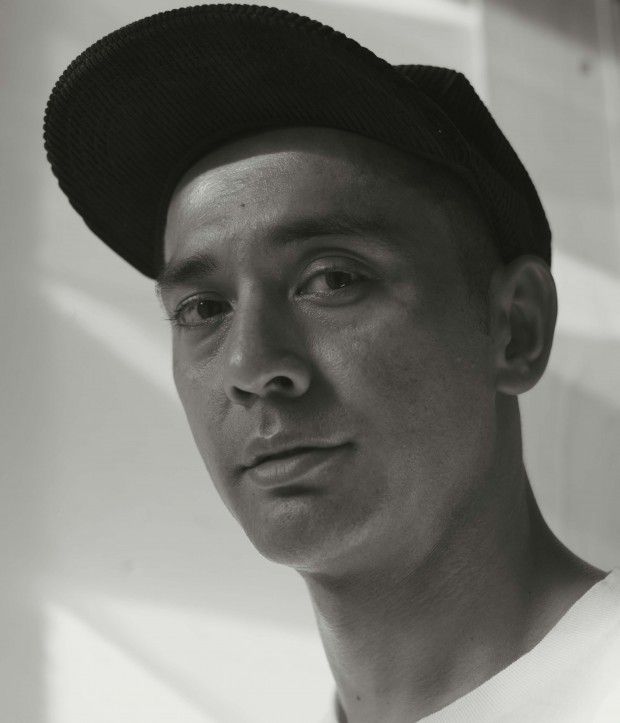
―You haven’t changed in your mindset when it comes to creation and your style of work but how has New York changed recently?
Hisham: It has changed a lot. The rent and cost of living is always rising and that has a definite effect on the creativity coming out of this city. Business in the creative world seems tougher than ever and we have to face this reality. What do I want to create? Why do I need to create? How can I make a living from this? These simple questions whiz around and my mind more than ever. At the same time, I feel really lucky because I can do business without changing my own style that much, and not everybody is lucky in this way, especially in the creative world. Lot of my friends moved to LA because of money, living expenses going sky-high. That flow of people leaving hasn’t stopped. I understand we live in a capitalist country but I’d love it if we lived in a more friendly, supportive environment for artists like myself to thrive, to create culture and inspiration for all.
―How do you think Social Networking effects the art industry?
Hisham: I mean, it’s a thing. It’s not the old type of, sit in front of your personal computer and use the Internet style. Now it’s your mobile phone and that automatically links you to your followers and people you want to follow, organizations you want to follow.. Art, performances, music, political view points, environmental issues, you can find everything you need to know through your device. You can connect to anything you want to very easily. Sometimes I feel like there is too much information out there. You can easily get lost. Most of the time I believe it is a good tool but as I said, you can also easily get lost by seeing too many products, different types of work that relates to your respective field, viewpoints, opinions.
―I believe the art world and society has been facing changing times regarding commitment. What kind of changes have you seen?
Hisham: I think art is used more as instant gratification now. When my art is used by companies, I get asked for the most hyper-colorful, extreme, fresh style work I can do, or for the most part at least. Younger artists who need less of a guaranteed payment than myself might get asked to do the same job these days and get the gig because the companies can get their quick fix of culture fulfilled for less money by telling the younger artist that they will get more exposure by doing a job. When you are young you can survive on less but that changes if you have a family and you have been doing this kind of work for a long time like me. Also artists with the most modern or current trending style might get a gig because they are the hot new thing. I think the same thing is happening in the fine art gallery world as well. The new blood gets the most attention, but then once they are old news they drop out of the scene quickly because they aren’t supported by the galleries once their work stops selling as much as when they were super popular and fresh on the scene. Social media stars get good offers for their work even though the quality of work is not the best it can be, just because they have a large Internet following. I think artists who are in it for the long haul are suffering these days, when their style is not on trend. Maybe the galleries have to be this way to survive, in the end it’s whether they can sell the artwork or not. I see this kind of transformation in the commercial art world as well as the fine art world. The trend to gather attention and eyes on the work speedy and fast, easy to digest and convenient, then onto the next.
―Can you share us some new information?
Hisham: Kill Alters are recording and mixing a new release that we hope to release this spring. Personally I have a new baby boy so that is very exciting and a huge inspiration to me. I hope my new work will be even more multi-disciplinary by creating more connections between my visual work and sound work. I also hope to create some new music under a new alias. I want to make more large scale performances happen in 2018.

Cancer Treatment Cente(*1)
Hisham Akira Bharoocha
http://www.hishamakirabharoocha.com
photography Diego Garcia
interview Ryoko Kuwahara
